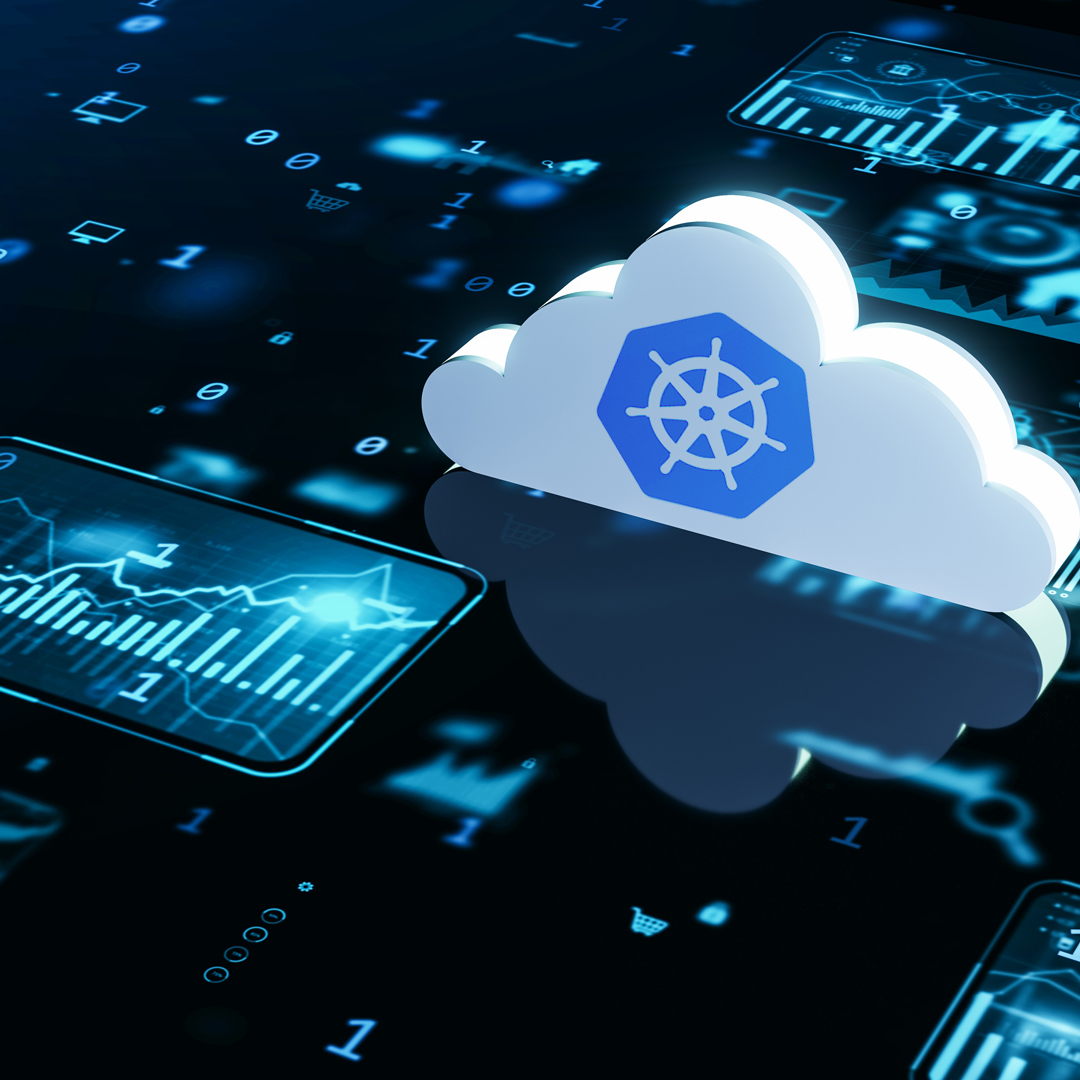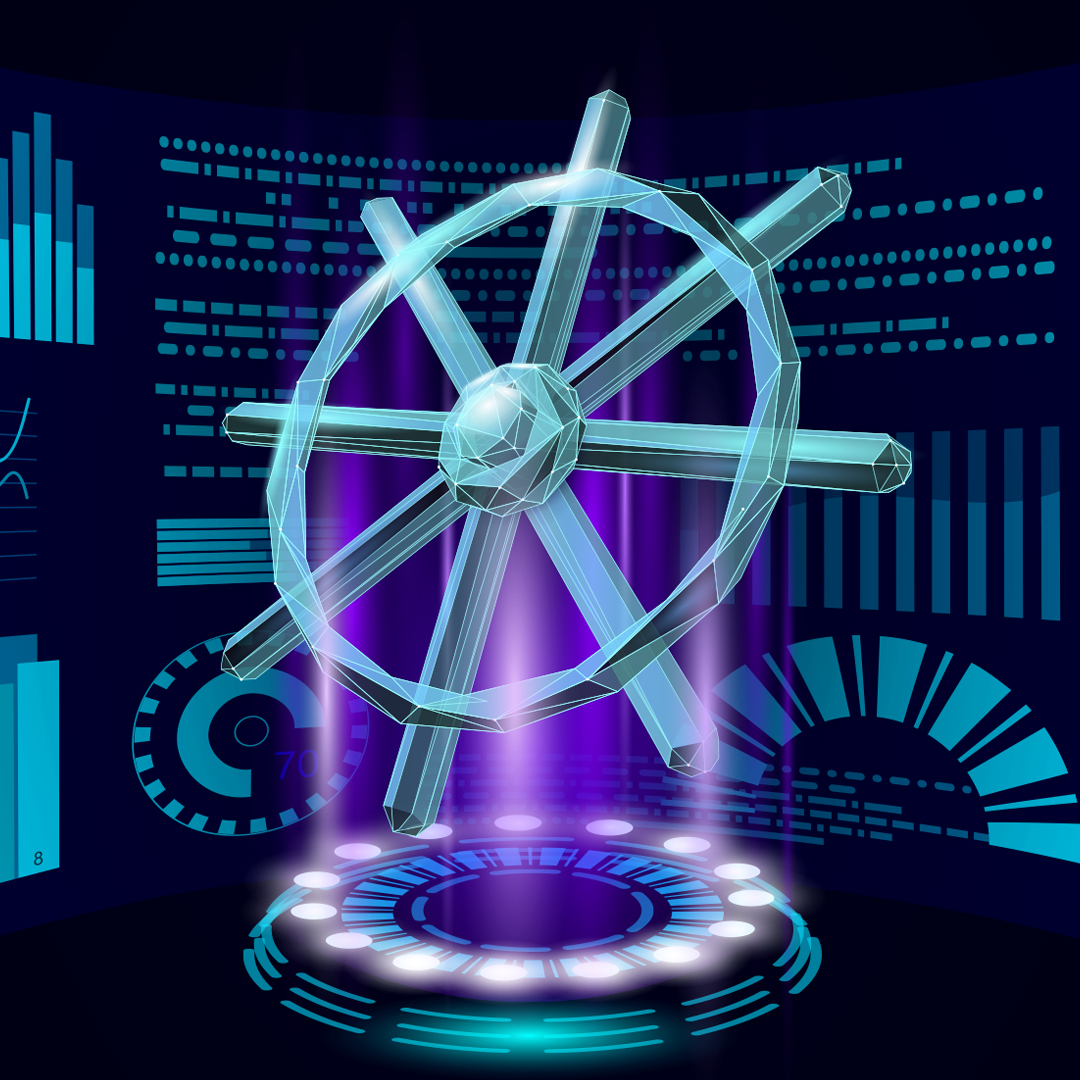While you’re focused on shipping features and scaling your applications, silent infrastructure anti-patterns are quietly burning through your cloud budget. These aren’t obvious failures that trigger alerts or cause outages. They’re the subtle, persistent inefficiencies that compound month after month, turning what should be cost-effective container orchestration into an expensive resource drain.
After auditing dozens of Kubernetes deployments, our team at Naviteq has identified six common (and fixable) patterns that consistently appear across organizations of all sizes. From big- and medium-sized companies to fast-growing startups, these same mistakes show up repeatedly, silently wasting 30-60% of cloud spend on container infrastructure. This isn’t about being extremely frugal, it’s about smart engineering, understanding your true resource needs, adopting smart FinOps practices and eliminating waste. If you’re a CTO, VP Engineering, Platform Engineering Lead, Cloud Architect, or FinOps Manager, this one’s for you.
Every single one of these anti-patterns is fixable via kubernetes cost optimization tools and FinOps practices. Let’s dive into the six most expensive mistakes your team is probably making right now.
1. Overprovisioned CPU and memory
Overprovisioned CPU and memory is the most common form of resource wastage in a Kubernetes deployment. Many DevOps engineers generally just deploy an application, set some resource requests and limits, and call it a day. But how do they arrive at those numbers? Is it based on rigorous performance testing under realistic load? Or is it a gut feeling, a copy-paste from an older project, or just a safe option?
The problem
Without proper performance testing, resource requests and limits are often wild guesses. Teams tend to overprovision because it’s safer than underprovisioning and risking an outage. A pod asking for 4 CPU cores and 8GB of RAM might only ever use 0.5 CPU and 1GB. You’re paying for resources that are reserved but never used, both at the pod and node level.
The goal isn’t to run everything at 100% utilization, that’s a recipe for performance issues. Aim for 60-70% average utilization on CPU and memory, with clear scaling policies to handle traffic spikes.
Why it hurts
- Higher node costs: If your pods are requesting more resources than they need, Kubernetes will schedule them on larger and more expensive nodes or scale up more nodes than necessary.
- Reduced bin packing efficiency: Overprovisioned pods make it harder for the scheduler to efficiently pack pods onto nodes. This leads to more fragmented resources and idle capacity.
- False sense of security: Overprovisioning feels like your application has plenty of headroom, but in reality, you’re just paying for empty space.
The fix
- Performance test religiously: Implement performance testing as part of your CI/CD pipeline. Measure actual CPU, memory, network, and disk I/O usage for your applications. Use tools like K6, JMeter, or Locust to load test your applications with realistic traffic patterns and measure resource consumption.
- Right-size requests and limits: Based on your performance testing, set resource requests to the minimum required for stable operation and limits slightly above that to catch unexpected spikes without crashing the node.
- Implement Vertical Pod Autoscaler (VPA): Vertical Pod Autoscaler (VPA) can analyze your actual resource usage and recommend appropriate requests. Deploy VPA in recommendation mode first to understand your real consumption patterns before making changes.
- Leverage Horizontal Pod Autoscaler (HPA) and KEDA: HPA scales the number of pods based on metrics like CPU, memory etc. Horizontal Pod Autoscaler (HPA) can help optimize resource allocation by scaling replicas based on actual demand rather than trying to over-provision individual pods. KEDA extends HPA to scale based on external event sources like message queue length, database connections.
- Consider Karpenter for node autoscaling: Karpenter is an open-source, high-performance Kubernetes cluster autoscaler that optimizes node provisioning. Unlike the traditional Cluster Autoscaler, Karpenter can provision exactly the right size and type of node for your pending pods, often leading to significant cost savings by reducing wasted node capacity.
Action item
Audit your top most expensive deployments and check if their resource requests align with actual usage under load.
2. Idle nodes
Kubernetes nodes that sit mostly empty are one of the most expensive infrastructure anti-patterns you can have. Unlike idle resources within busy nodes, completely underutilized nodes represent pure waste, you’re paying full price for compute capacity that provides minimal value.
The problem
Nodes that are underutilized, or entirely idle, are one of the most common forms of unnecessary cloud costs. This can happen when:
- Poor bin packing: When pods have mismatched resource requests or anti-affinity rules spread workloads inefficiently, you end up with fragmented capacity across multiple nodes. A node might be 30% utilized but unable to schedule additional pods due to resource constraints or scheduling rules.
- Node pool strategy flaws: Many teams create separate node pools for different workload types without considering utilization patterns. You might have dedicated pools for batch jobs, web services, and background tasks, each running at low utilization because workloads don’t overlap efficiently.
- Lack of scheduling constraints: Without proper resource requests, affinity/anti-affinity rules, tolerances, and taints, pods can spread out haphazardly, preventing efficient packing.
- Scaling up too aggressively: Your cluster autoscaler might be configured to scale up too quickly or too many nodes at once, and then take too long to scale them back down.
Why it hurts
- Direct cloud spend: You pay for every hour a node is running, regardless of how much of its capacity is being used.
- Increased management overhead: More nodes mean more need for maintenance, patching, and monitoring.
The fix
- Optimize resource requests and limits: Monitor bin packing efficiency with dashboards that show resource requests vs. actual node capacity. Alert when nodes consistently run below utilization thresholds, and right-size them proactively to reduce wastage.
- Implement Cluster Autoscaler or Karpenter: A robust autoscaler is crucial. It should scale nodes up when demand increases and, critically, scale them down when they are underutilized. Karpenter, with its ability to provision custom-fit nodes, often outperforms the traditional Cluster Autoscaler in cost efficiency.
- Consolidate node pools: In many cases, fewer, more flexible node pools work better than highly specialized ones. Consider using taints and tolerations to handle special requirements while maintaining efficient packing.
- Use Pod Disruption Budgets (PDBs) wisely: PDBs are important for application availability but overly restrictive PDBs can sometimes hinder the autoscaler’s ability to evict pods and scale down nodes.
- Leverage node affinity and anti-affinity: Use nodeSelector or nodeAffinity to place specific workloads on specific types of nodes only when necessary. Use podAntiAffinity to spread critical services across different nodes, but be mindful of how this might affect bin packing. Implement proper pod anti-affinity and affinity rules to pack compatible workloads together.
- Set pod priority and preemption: Define higher priorities for critical workloads to ensure they get scheduled even during resource contention. This also allows the removal of lower-priority pods from underutilized nodes.
Action item
Review your cluster autoscaling logs and your node utilization metrics. Identify any nodes that have consistently low CPU/memory utilization over extended periods.
3. Unused DaemonSets
DaemonSets are designed to run a copy of a pod on all or some nodes in a cluster. They’re essential for things like logging agents, monitoring agents, and network proxies.
The problem
Many Kubernetes distributions, especially managed services like GKE, come with a suite of default DaemonSets. While some are critical, others might be providing functionality you don’t use, already have an alternative for, or simply don’t need in certain environments (e.g., a development cluster). DaemonSets are resource multipliers i.e. every node runs a copy of every DaemonSet pod.
This problem is particularly acute in Google Kubernetes Engine (GKE) Autopilot clusters, where the platform deploys multiple system DaemonSets by default. This includes logging agents, monitoring collectors, security scanners, and network plugins.
Why it hurts
- Direct resource consumption: Each DaemonSet pod requests CPU and memory, even if it’s minimal. When you have multiple nodes and many DaemonSets the resource consumption increases drastically.
- Hidden costs in autopilot: In Autopilot, you don’t control the base VM image, so you’re implicitly paying for all the system DaemonSets that Google includes. If you’re not auditing them, you’re paying for features you may not even be using.
- Increased attack surface: Every running container is a potential vulnerability, even if it’s a system component.
- Legacy DaemonSets: Teams often install monitoring agents, log shippers, or security tools, then migrate to different solutions without cleaning up the old deployments. The unused DaemonSets continue running indefinitely, consuming resources and incurring costs.
The fix
- Audit all DaemonSets: Conduct monthly audits of all DaemonSets in your clusters. For each one, document its purpose, owner, and whether it’s actively used.
- Understand their purpose: For each DaemonSet, research what it does. Is it essential for cluster operation? Is it providing a service you actively use and rely on?
- DaemonSet approval process: Create a DaemonSet approval process for new deployments. Before allowing cluster-wide pod deployment, require teams to justify the need and document the expected resource consumption.
- Disable/remove unnecessary DaemonSets: If a DaemonSet is not serving a critical purpose for your team or application, remove it. Be cautious with system DaemonSets in managed Kubernetes services, consult documentation or Kubernetes experts like that from Naviteq before going through this process.
- Use node selectors for DaemonSets: If a DaemonSet is only needed on a subset of nodes, use nodeSelector or nodeAffinity to restrict where it gets scheduled. This prevents it from running unnecessarily on all nodes.
Action item
List all DaemonSets in your cluster using kubectl get daemonsets –all-namespaces. For any that are not explicitly deployed by your team, research their purpose and determine if they are truly essential for your operations.
4. Too many clusters
Kubernetes clusters aren’t free. Each cluster comes with control plane costs, ingress controllers, DNS servers, monitoring agents, and all the operational overhead of maintaining a separate environment.
The classic anti-pattern is one cluster per environment: development, staging, performance testing, integration testing, user acceptance testing, and production. Each cluster runs its own ingress, monitoring, logging, and security infrastructure, multiplying operational costs and complexity. While isolation has its benefits, the “one cluster per stage/team” mentality often leads to significant, unnecessary cost and complexity.
The problem
Each Kubernetes cluster incurs a baseline cost, regardless of how many applications are running on it. This includes:
- Control plane costs: The masters, etcd, and associated components all consume resources and incur charges. For self-managed clusters you just cover this expense by your budget & people, for managed clusters in the cloud – you pay for the cloud provider.
- Networking costs: Load balancers, NAT gateways, VPN connections, and internal DNS services are often duplicated across clusters.
- Monitoring and logging costs: Separate instances of Grafana, Prometheus, Elasticsearch, Splunk, or cloud-provider logging solutions for each cluster.
- Ingress controllers and service meshes: Duplicated installations and configurations.
- Tooling and automation: Managing CI/CD pipelines, security scanning, and policy enforcement across many clusters creates redundant work.
- Idle capacity: Smaller clusters are less efficient at bin packing. You’re more likely to have idle capacity across several small clusters than in one well-managed, larger cluster.
Why it hurts
- Direct cloud spend: All the duplicated infrastructure and management components add up quickly.
- Increased operational overhead: Managing, upgrading, and securing numerous clusters is far more complex and resource-intensive than managing a few well-designed ones.
- Configuration drift: It becomes harder to maintain consistent configurations and policies across many clusters, leading to potential security gaps and operational issues.
- Certificate management: It becomes a nightmare with multiple clusters. TLS certificates, service mesh configurations, and security policies need to be maintained independently, increasing both operational overhead and the probability of configuration drift.
Action item
Draw an architecture diagram of your current cluster setup. For each cluster, list its purpose and the duplicated services it hosts. Identify opportunities for consolidation using namespaces.
5. Always-on non-prod environments
Non-production environments that run 24/7 represent some of the most wasteful cloud spending in modern organizations. Development and testing workloads typically see heavy usage during business hours and sit completely idle during nights and weekends, yet most teams leave these environments running continuously.
The problem
Non-production environments (development, testing, staging, UAT) are critical for development and testing. However, they are rarely used continuously. Leaving them running when not in active use is a waste of resources.
Why it hurts
- Continuous cloud billing: You pay for the compute services (cpu, memory, and any associated services (databases, caches, storage) 24/7, even if they’re only used for 8-10 hours a day.
- Complicated shutdown process: Database and stateful services complicate the shutdown process. Teams often keep entire clusters running because they don’t want to manage the complexity of stopping and starting persistent workloads. This leads to situations where a single database keeps dozens of other services running unnecessarily.
The fix
- Implement scale-to-zero for non-prod: Implement automated scaling policies that shut down non-production environments outside business hours. Tools like can automatically scale deployments to zero replicas during off-hours and scale them back up when needed.
- Cron-based scaling: Use cron-based scaling for predictable schedules. Most development teams work standard business hours, making it straightforward to implement scaling policies that match usage patterns. For example, scale down at 6 PM and scale up at 8 AM automatically.
- Automate CI runner scaling: CI/CD tools like GitHub Actions provide you ability to self-host the runners (for secure and stable access to your internal workloads) and CI/CD infrastructure should scale to zero when not in use. Many organizations run dedicated build agents continuously when they could be provisioning runners on-demand, consuming resources only during active builds.
- Develop a “Shutdown” and “Startup” process: Implement weekend shutdown policies for development and staging environments unless there’s a specific business need for weekend availability.
Action item
Identify all non-production environments. For each, determine its active usage hours. Implement a strategy to scale it down during off-hours.
6. No autoscaling or misconfigured HPA/KEDA
Autoscaling is supposed to optimize costs by matching resource allocation to actual demand. When configured correctly, it is great for efficiency and cost savings but when poorly configured autoscaling often creates more waste than manual resource management.
The problem
Many teams enable Horizontal Pod Autoscaler (HPA) or KEDA without fully understanding the underlying metrics, thresholds, and scaling behavior.
- Too aggressive scaling: HPA/KEDA configured to scale up too quickly or based on overly sensitive metrics can lead to “thrashing,” where pods are constantly being added and removed. This incurs scheduling overhead and potentially overprovisioning.
- Insufficient cool-down periods: If the scale-down cool-down period is too short, the autoscaler might remove pods only to add them back moments later. If it’s too long, you’re paying for idle pods for an extended duration.
- Wrong metrics: Scaling based on metrics that don’t truly reflect application load (e.g., scaling on CPU for an I/O-bound application) will be ineffective and wasteful.
- Missing resource requests: HPA relies on resource requests to make informed scaling decisions. If your pods don’t have accurate resource requests, HPA will struggle to make good choices.
- Varying workload patterns: A “one-size-fits-all” HPA configuration might not work for all applications, especially those with spiky or unpredictable traffic.
Why it hurts
- Unnecessary pod sprawl: Overly aggressive scaling creates more pods than needed, increasing resource consumption and cloud costs.
- Increased scheduling overhead: The Kubernetes scheduler has to work harder, and nodes might constantly be adjusting their capacity.
- Performance degradation: Constant scaling up and down can sometimes lead to temporary performance dips as new pods initialize or connections are drained.
- Horizontal Pod Autoscaler (HPA) misconfigurations: HPA misconfigurations are particularly costly. Teams often set overly sensitive scaling thresholds that cause constant pod creation and destruction.
- KEDA (Kubernetes Event-Driven Autoscaling) misconfigurations: KEDA misconfigurations can be even more problematic when misconfigured. Queue-based scaling without proper understanding of message processing rates leads to over-provisioning or under-provisioning that hurts both performance and cost.
The fix
- Tune HPA/KEDA parameters meticulously:
- Target average utilization: Start with 50-70% CPU/memory utilization as a target.
- minReplicas and maxReplicas: Set these values realistically. minReplicas should handle baseline load while maxReplicas should be a sensible upper limit to prevent runaway costs.
- scaleUp and scaleDown Stabilization windows: These are crucial. scaleUp should be short enough to react to demand. scaleDown should be longer to prevent thrashing and ensure load has truly subsided.
- Choose the right metrics: Don’t just rely on the CPU. For I/O-bound applications, scale on network I/O or disk operations. For message queues, use queue length. KEDA excels here by allowing scaling on virtually any external metric.
- Combine HPA with VPA: Use VPA to right-size individual pods, and HPA to scale the number of those right-sized pods. They work best in tandem.
- Monitor HPA events and behavior: Watch your HPA events (kubectl describe hpa <name>) and observe how your pod counts fluctuate alongside your chosen metrics.
- Test under load: Test autoscaling behavior under controlled load conditions. Many teams deploy autoscaling configurations without validating they work as expected, leading to poor performance during actual traffic spikes.
- Conservative scaling policies: Start with conservative scaling policies and tune them based on actual behavior. Set higher thresholds for scale-up events (70-80% utilization) and implement longer cool-down periods to prevent flapping behavior.
Action item
Review the HPA/KEDA configurations for your most critical and traffic-heavy applications. Check if the minReplicas, maxReplicas, and stabilizationWindow settings are optimized for your workload patterns.
Bonus tip: use Grafana dashboards and alerts to track all of this
Visibility is the foundation of cost optimization. Without proper monitoring and alerting, these anti-patterns will continue burning money in the background while your team focuses on feature development and operational fires. You can’t optimize what you can’t measure. A robust monitoring and alerting setup is essential to prevent cloud waste. Monitoring and log management services provided by our experts here at Naviteq, can help you establish a production grade setup for your Kubernetes deployments.
The fix
- Centralized monitoring: Use Prometheus and Grafana (or your cloud provider’s equivalent) to collect and visualize metrics from your entire Kubernetes environment.
- Custom or existing (from the community) Grafana dashboards: Create dashboards that highlight key cost-related metrics:
- Node CPU/Memory utilization
- Pod CPU/Memory requests vs. usage
- HPA/KEDA scaling events and replica counts
- Cluster Autoscaler logs
- Network egress costs
- Proactive alerts: Set up alerts for:
- Nodes with consistently low utilization
- Pods with significant discrepancies between requests and actual usage
- Spikes in cluster costs or node counts
- Unusual DaemonSet resource consumption
- Non-prod environments running during off-hours
- Track key cost metrics: Grafana dashboards (or other visualization) should track key cost metrics across all your clusters, such as resource utilization by node and namespace, scaling events over time, DaemonSet resource consumption, and environment runtime patterns.
- Create alerts for cost anomalies: Nodes consistently running below utilization thresholds, unusual scaling activity, or unexpected resource consumption spikes. These alerts should trigger investigation before small inefficiencies become major cost problems.
Action item: Ensure you have comprehensive Grafana dashboards and alerts in place to give you real-time visibility into your Kubernetes costs and resource utilization.
Conclusion
These six anti-patterns aren’t edge cases, they’re common, fixable problems that exist in most Kubernetes environments today. The difference between organizations that manage cloud costs effectively and those that don’t isn’t just technical sophistication, it’s the planning, skillset and discipline to implement proper processes, tooling, and cultural practices around cost optimization. At Naviteq, our experts bring years of hands-on experience in Kubernetes cluster management to help organizations identify and eliminate these costly anti-patterns. We’ve guided countless companies through comprehensive cost optimization transformations, turning wasteful clusters into efficient, budget-conscious operations.
Start by auditing your DaemonSets, review your non-production environment schedules, and check your resource utilization patterns. These changes can often reduce costs by 20-30% within the first month. Our seasoned Kubernetes specialists can accelerate this process, leveraging proven methodologies and battle-tested tools to deliver results faster than internal teams working alone. Naviteq’s experts don’t just fix immediate problems, we establish sustainable practices and train your teams to maintain usage of FinOps practices.
Kubernetes cost optimization isn’t a one-time project, it’s an ongoing cultural practice that requires consistent attention and reinforcement. Your Kubernetes clusters can be cost-effective, scalable, and performant simultaneously. It just requires the right approach to resource management, environment lifecycle, and operational practices.
Ready to stop the quiet bleed on your cloud budget?
Contact Naviteq today for a free consultation and discover how much you could be saving with automated Kubernetes cost optimization strategies. Our experts can audit your current setup and provide concrete recommendations for reducing cloud spend without compromising performance. We’ll help you identify your biggest areas of waste and implement a tailored Kubernetes cost optimization strategy that delivers real results.
Frequently Asked Questions
How much can I realistically save by fixing these Kubernetes anti-patterns?
Most organizations see 30-60% reduction in their container infrastructure costs within the first 3-6 months. The biggest savings typically come from consolidating clusters and implementing proper autoscaling policies.
Should I use Vertical Pod Autoscaler (VPA) in production environments?
VPA works well in production for workloads with predictable resource patterns, but avoid using it with HPA simultaneously. Start with VPA recommendations in monitoring mode before enabling automatic resource adjustments.
What's the difference between Cluster Autoscaler and Karpenter for cost optimization?
Karpenter provisions right-sized nodes faster and scales down more aggressively than Cluster Autoscaler, typically resulting in better cost efficiency.
How often should I audit DaemonSets and unused resources?
Perform regular DaemonSet audits and quarterly cluster topology reviews. Set up automated alerts for resources with consistently low utilization to catch waste before it becomes expensive.
Is it safe to shut down non-production environments during off-hours?
Yes, with proper backup procedures and automated startup scripts. Most teams save significant resources on non-prod environments by shutting them down during off-hours while maintaining developer productivity through quick environment restoration. That said, you know your applications better. So, the final decision and responsibility is on your side. From our side we can always consult you and find the most cost-efficient way in your specific case.






